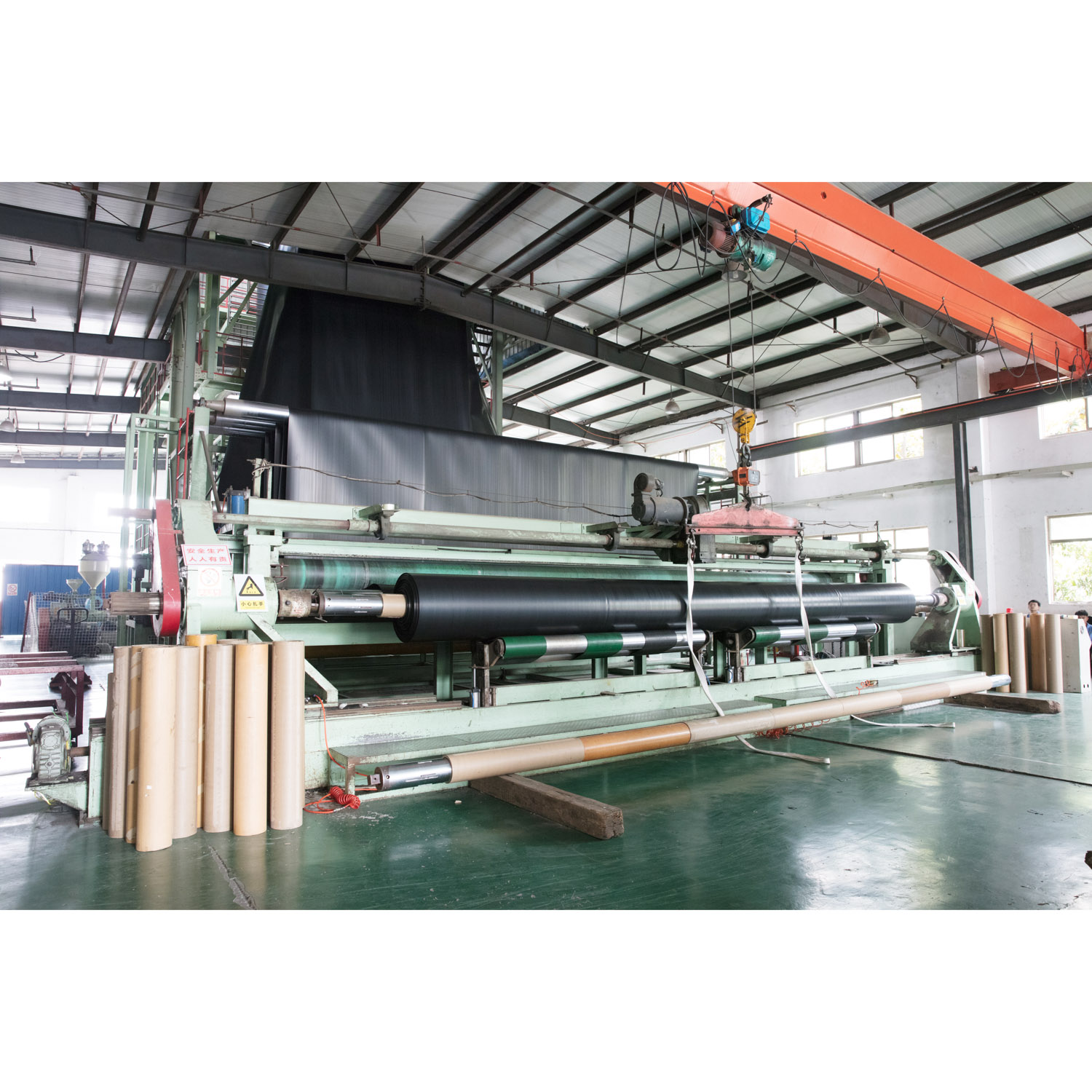Geomembranes play an essential role in many industrial and environmental applications, particularly for waterproofing, containment, and lining solutions. Whether used in landfills, mining, or pond liners, these materials help prevent the leakage of liquids and gases, providing both environmental protection and operational efficiency. But a common question that arises when using geomembranes is: "What is the life expectancy of a geomembrane?"
In this article, we will explore the factors that influence the lifespan of geomembranes, with a specific focus on popular products like HDPE geomembranes used in pond liners. We will also provide insights into how choosing the right geomembrane material and installation method can impact its durability over time.
What is a Geomembrane?
A geomembrane is a synthetic, flexible, and impermeable material typically made from polymers such as high-density polyethylene (HDPE), low-density polyethylene (LDPE), or polyvinyl chloride (PVC). These materials are used for a wide variety of applications, including pond liners, landfill liners, and mining operations, where preventing the migration of liquids or gases is a key requirement.
In addition to being waterproof, geomembranes also provide protection in various settings, such as:
Sheimp or fish pond liners to keep water contained and maintain a healthy environment for aquatic life.
Large pond liners for industrial or agricultural purposes.
Landfill liners to prevent hazardous waste from leaking into the surrounding soil.
Wastewater treatment facilities to safely contain and manage effluents.
The lifespan of a geomembrane is influenced by a variety of factors, including material composition, environmental exposure, and the quality of installation.
What Affects the Life Expectancy of a Geomembrane?
Several factors determine the life expectancy of a geomembrane, and understanding these variables is essential for selecting the right geomembrane material for your project. Here are the primary factors that influence the durability of geomembranes:
1. Material Type
The type of material used to manufacture a geomembrane significantly impacts its longevity. The three most common materials used for geomembranes are HDPE, LDPE, and PVC. Each of these materials has distinct properties that affect its lifespan.
HDPE Geomembranes: These geomembranes are considered the most durable and reliable option for a wide range of applications. HDPE geomembranes are highly resistant to chemicals, UV radiation, and physical damage, making them ideal for long-term use. For applications such as pond liners, HDPE geomembranes can last more than 70 years or longer if properly maintained. They are commonly used for both aquaculture farming pond liners and large pond liners due to their excellent resistance to environmental factors.
LDPE Geomembranes: LDPE geomembranes offer more flexibility compared to HDPE, but they are generally less resistant to UV rays and chemical exposure. These geomembranes are typically used for smaller applications where flexibility is more important than long-term durability. Their lifespan ranges from 10 to 15 years depending on the conditions.
PVC Geomembranes: PVC geomembranes are a good middle ground between HDPE and LDPE in terms of flexibility and durability. However, they are more susceptible to degradation from UV exposure. Typically, PVC geomembranes have a lifespan of 15-20 years, but they need proper UV protection to extend their longevity.
2. Thickness of the Geomembrane
The thickness of the geomembrane is another critical factor that affects its lifespan. Thicker geomembranes generally offer better resistance to physical damage, punctures, and wear over time. For example, a 45 mil pond liner provides a good balance of strength and flexibility for small to medium-sized ponds. Thicker geomembranes are better suited for more demanding applications, such as landfill liners and large pond liners, where long-term durability and protection are essential.
3. Environmental Conditions
The environmental conditions in which the geomembrane is used to have a significant impact on its longevity. Key environmental factors include:
UV Exposure: Geomembranes exposed to sunlight for extended periods are susceptible to degradation from UV radiation. HDPE geomembranes are known for their excellent UV resistance, which is why they are often chosen for outdoor applications, including pond liners. PVC geomembranes, on the other hand, may require UV protection to prevent early deterioration.
Temperature Fluctuations: Extreme temperatures can weaken geomembranes. High temperatures can soften the material, leading to deformation, while low temperatures can make the geomembrane brittle and prone to cracking.
Chemical Exposure: Geomembranes used in industrial applications where they may come into contact with chemicals need to be resistant to those substances. HDPE geomembranes are highly resistant to a broad range of chemicals, making them the preferred choice for projects involving hazardous materials.
4. Quality of Installation
Proper installation is essential for ensuring that a geomembrane lasts for its expected lifespan. Even the most durable materials will fail if not installed correctly. Common installation errors include improper geomembrane liner welding or inadequate seam sealing, which can lead to leaks and degradation over time.
Choosing a reputable geomembrane liner manufacturer and working with experienced installers is critical for achieving the best performance. Geomembrane liner welding techniques, such as hot wedge welding or extrusion welding, must be done carefully to ensure the seams are strong and waterproof.
5. Maintenance and Repair
Like any material exposed to environmental stress, geomembranes require regular maintenance to maximize their lifespan. It’s important to inspect the pond liners or other geomembrane liner installations periodically for signs of wear, punctures, or other damage. Timely repairs using products like geomembrane liner tape can extend the life of the material significantly.
For instance, fish pond liners or other pond liners that are damaged should be patched promptly to prevent leaks. Regular checks for punctures or tears and prompt repairs will keep your geomembrane performing well for many years.














